-
Home
-
Contributors
-
International
-
Account
-
Information
More From Contributor
- The latest in Wi-Fi technology allows for 450 Mbps of signaling per radio.
- More than a 50% increase in performance over any two spatial stream product. Security • Choice of IEEE 802.11i, Wi-Fi Protected Access 2 (WPA2), or WPA: locks out unauthorized wireless access by authenticating users prior to granting network access; robust Advanced Encryption Standard (AES) or Temporal Key Integrity Protocol (TKIP) encryption secures the data integrity of wireless traffic Warranty & support • Lifetime warranty: for as long as you own the product with advance replacement & next-business-day delivery (available in most countries)* ...
- The latest in Wi-Fi technology allows for 450 Mbps of signaling per radio.
- More than a 50% increase in performance over any two spatial stream product. Security • Choice of IEEE 802.11i, Wi-Fi Protected Access 2 (WPA2), or WPA: locks out unauthorized wireless access by authenticating users prior to granting network access; robust Advanced Encryption Standard (AES) or Temporal Key Integrity Protocol (TKIP) encryption secures the data integrity of wireless traffic Warranty & support • Lifetime warranty: for as long as you own the product with advance replacement & next-business-day delivery (available in most countries)* ...
Colour: Black, Silver\n\n\n\n Product Family: E-Series\n\n\n\n Model: E23 G4\n\n\n\n\n\n\n\n ...
Colour: Black, Silver\n\n\n\n Product Family: E-Series\n\n\n\n Model: E23 G4\n\n\n\n\n\n\n\n ...
- 80 k Hz Vertical scan range 50
- 60 Hz Viewable size, horizontal 52.7 cm Viewable size, vertical 29.6 cm Supported graphics resolutions 640 x 480 (VGA), 720 x 400, 800 x 600 (SVGA), 1024 x 768 (XGA), 1280 x 1024 (SXGA), 1280 x 720 (HD 720), 1280 x 800 (WXGA), 1440 x 900 (WXGA+), 1600 x 900, 1680 x 1050 (WSXGA+), 1920 x 1080 (HD 1080) Display resolution 1920 x 1080 pixels Response time 5 ms Display diagonal 60.5 cm (23.8") Contrast ratio (typical)1000:1NTSC coverage (typical)72% Panel type IPSRGB colour space NTSCDisplay diagonal (metric)60.45 cm Audio Built-in speaker (s) No Performance Built-in speaker (s) No Built-in camera No AMD Free Sync Yes NVIDIA G-SYNCNo Low Blue Light technology Yes Multimedia Built-in speaker (s) No Built-in camera No Design Market positioning Business Heavy metals free Hg (mercury) Product colour Black, Silver Camera Built-in camera No Ports & interfaces Built-in USB (Universal Serial Bus) hub Yes USB hub version 3.2 Gen 1 (3.1 Gen 1)USB upstream port type USB Type-BNumber of upstream ports 1USB Type-A downstream ports quantity 4 Headphone out No DVI port No VGA (D-Sub) ports quantity 1HDMI ports quantity 1 Display Ports quantity 1HDCPYes Audio input No HDMIYes HDMI version 1.2 Display Port version 1.4 Technical details Height (without stand)32.3 cm Depth (without stand)4.7 cm Width (without stand)53.9 cm Cable lock slot Yes HDMIYes Product colour Black, Silver Sustainability certificates ENERGY STARWeight (with stand)5.7kg Ergonomics VESA mounting Yes Cable lock slot Yes Panel mounting interface 100 x 100 mm Swivelling Yes Swivel angle range-45
- 45&176; Tilt angle range-5
- 23&176; Height adjustment 15 cm Pivot Yes Pivot angle-90
- 90&176; Height adjustment Yes Tiltable Yes Power AC input voltage 100
- 240 VPower consumption (max)6 WPower consumption (standby)0.3 WPower consumption (typical)3.5 WPower consumption (off)0.23 WOperational conditions Operating temperature (T-T)5
- 35 &176;COperating relative humidity (H-H)20
- 80% Sustainability Sustainability certificates ENERGY STARWeight & dimensions Height (without stand)32.3 cm Depth (without stand)4.7 cm Width (without stand)53.9 cm Width (with stand)539.4 mm Depth (with stand)207 mm Height (with stand)494.9 mm Package width 611 mm Package depth 223 mm Package height 392 mm Package weight 8.4kg Weight (with stand)5.7kg Packaging data Package width 611 mm Package depth 223 mm Package height 392 mm Package weight 8.4kg Other features Height (without stand)32.3 cm Depth (without stand)4.7 cm Width (without stand)53.9 cm Power consumption (max)6 WHDMIYes\n\n\n\n Datasheet: https://d 5bm 31en 4blvo.cloudfront.net/uploads/pdf/mmo_87188676_1624367813_3387_52219.pdf ...
Includes:: ECMP capability. Quality of Service • Traffic prioritization (IEEE 802.1p): allows real-time traffic classification into eight priority levels mapped to eight queues. Security • Multiple user authentication methods: IEEE 802.1X: industry-standard method of user authentication using an IEEE 802.1X supplicant on the client in conjunction with a RADIUS server; Web-based authentication: similar to IEEE 802.1X, provides a browser-based environment to authenticate clients that do not support the IEEE 802.1X supplicant. ...
Includes:: 6-slot & 12-slot chassis & associated zl modules & bundles. The foundation for all of these switches is a purpose-built, programmable Pro Vision ASIC that allows the most demanding networking features, such as quality of service (Qo S) & security, to be implemented in a scalable yet granular fashion. With 10/100, Gigabit Ethernet & 10 Gigabit Ethernet interfaces, choice of Po E+ & Non-Po E, integrated layer 3 features & HP alliance ONE Solutions, the E5400 zl switches offer excellent investment protection, flexibility, & scalability, as well as ease of deployment, operation, & maintenance. Features Quality of Service (Qo S) ? Advanced classifier-based Qo S: classifies traffic using multiple match criteria based on Layer 2, 3, & 4 information; applies Qo S policies such as setting priority level & rate limit to selected traffic on a per-port or per-VLAN basis Management ? Remote Intelligent Mirroring: mirrors selected ingress/egress traffic based on ACL, port, MAC address, or VLAN to a local or remote E8200, E6200, E5400, or E3500 switch anywhere on the network Connectivity ? IEEE 802.3az Energy Efficient Ethernet: Lowers power consumption in periods of low link usage. (Supported on v 2 zl 10/100/1000 & 10/100 modules) Performance ? High-speed/capacity architecture: 1 Tbps crossbar switching fabric provides intra-module & inter-module switching with 585.6 million pps throughput on the purpose-built Pro Vision ASICs Resiliency & high availability ? Virtual Router Redundancy Protocol: allows groups of two routers to dynamically back each other up to create highly available routed environments Layer 2 switching ? HP's switch meshing: dynamically load-balances across multiple active redundant links to increase available aggregate bandwidth Layer 3 services ? User Datagram Protocol (UDP) helper function: allows UDP broadcasts to be directed across router interfaces to specific IP unicast or subnet broadcast addresses & prevents server spoofing for UDP services such as DHCP ...
Includes:: 6-slot & 12-slot chassis & associated zl modules & bundles. The foundation for all of these switches is a purpose-built, programmable Pro Vision ASIC that allows the most demanding networking features, such as quality of service (Qo S) & security, to be implemented in a scalable yet granular fashion. With 10/100, Gigabit Ethernet & 10 Gigabit Ethernet interfaces, choice of Po E+ & Non-Po E, integrated layer 3 features & HP alliance ONE Solutions, the E5400 zl switches offer excellent investment protection, flexibility, & scalability, as well as ease of deployment, operation, & maintenance. Features Quality of Service (Qo S) • Advanced classifier-based Qo S: classifies traffic using multiple match criteria based on Layer 2, 3, & 4 information; applies Qo S policies such as setting priority level & rate limit to selected traffic on a per-port or per-VLAN basis Management • Remote Intelligent Mirroring: mirrors selected ingress/egress traffic based on ACL, port, MAC address, or VLAN to a local or remote E8200, E6200, E5400, or E3500 switch anywhere on the network Connectivity • IEEE 802.3az Energy Efficient Ethernet: Lowers power consumption in periods of low link usage. (Supported on v 2 zl 10/100/1000 & 10/100 modules) Performance • High-speed/capacity architecture: 1 Tbps crossbar switching fabric provides intra-module & inter-module switching with 585.6 million pps throughput on the purpose-built Pro Vision ASICs Resiliency & high availability • Virtual Router Redundancy Protocol: allows groups of two routers to dynamically back each other up to create highly available routed environments Layer 2 switching • HP's switch meshing: dynamically load-balances across multiple active redundant links to increase available aggregate bandwidth Layer 3 services • User Datagram Protocol (UDP) helper function: allows UDP broadcasts to be directed across router interfaces to specific IP unicast or subnet broadcast addresses & prevents server spoofing for UDP services such as DHCP ...
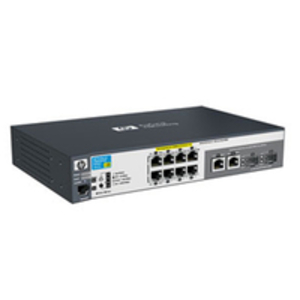
HP E2520-8-PoE Switch
designs. Key features: - Fully managed Layer 2 switch in 8 or 24 ports; - Choice of Fast Ethernet or Gigabit PoE models; - Power over Ethernet for voice, video, and wireless; - Energy-efficient design and quiet operation; - Rack-mountable and compact form factors. Quality of Service (QoS) Selectable queue configuration: increases performance and/or traffic reliability by selecting the number of queues that best meet the requirements of your network applications; switch will map 8 priorities to either 2 or 4 queues. Simplified QoS configuration: - Port-based: prioritize traffic by specifying a port and priority level; - VLAN based: prioritize traffic by specifying a VLAN and priority level. - IEEE 802.1p traffic prioritization: honors and sets IEEE 802.1p priority in the VLAN tag. Type of
service: - IP Precedence: honors IP Precedence bits and allows mapping to a priority queue; - Differentiated Services Code Point values: honors Differentiated Services Code Point (DSCP) bits and allows mapping to a priority queue. Flow control: helps ensure reliable communications during full-duplex operation. Management Choice of management interfaces: - Web graphical user interface (GUI): easy-to-use graphical interface allows configuration of the switch from any Web browser; - Command-line interface (CLI): robust command-line interface provides advanced configuration and diagnostics; - Simple Network Management Protocol (SNMPv2c/SNMPv3): allows switch to be managed with a variety of third-party network management applications. Integration with HP PCM: enables discovery, mapping,
logging, and configuration via HP PCM, which is available as a free download from the Web. Virtual stacking: single IP address manages up to 16 switches. Port mirroring: allows traffic to be mirrored on any port or a network analyzer to assist with diagnostics or detecting network attacks. Multiple configuration files: configuration file management tools allow up to three configuration files to be managed and stored on the switch. Dual flash images: provide independent primary and secondary operating system files for backup while upgrading. Network tools: command-line interface includes telnet client, ping, traceroute, and Layer 2 link test tools for diagnostics. IEEE 802.1AB Link Layer Discovery Protocol (LLDP): automated device discovery protocol for easy mapping by network
management applications. Command authorization: leverages RADIUS to link a custom list of CLI commands to individual network administrator's login; also provides an audit trail. Logging: local and remote logging of events via SNMP (v2c and v3) and syslog. IPv6 host: allows switches to be managed using IPv6 protocols. RMON: provides advanced monitoring and reporting capabilities for statistics, history, alarms, and events. Find-Fix-Inform: finds and fixes common network problems automatically, then informs administrator. Front-panel LEDs: - Locator LED: allows users to set the locator LED on a specific switch to either turn on, blink, or turn off; simplifies troubleshooting by making it easy to locate a particular switch within a rack of similar switches; - Per-port LEDs: provides an
at-a-glance view of status, activity, speed, and full-duplex operation; - Power and fault LEDs: display any issues. Connectivity - Auto-MDIX: automatically adjusts for straight-through or crossover cables on all ports; - Small Form-Factor Pluggable (SFP) slots: dual-personality ports allow for either copper or fiber connectivity such as Gigabit-SX, -LX, -LH, and -BX or 100-FX and -BX; - IEEE 802.3af Power over Ethernet: provides up to 15.4 W per port to IEEE 802.3af-compliant PoE-powered devices such as IP phones, wireless access points, and security cameras (see product specifications for total PoE power available); supports some prestandard PoE devices (see product FAQs for more details); - RJ-45 serial console port: front of unit location provides easy access to switch CLI.
Performance - Switch on a chip: provides highly integrated, high-performance switch design with a non-blocking architecture; - Jumbo packet support: supports up to 9216-byte frame size to improve performance of large data transfers (2520G switch). Resiliency and high availability Port trunking and link aggregation: - Trunking: supports up to eight links per trunk to increase bandwidth and create redundant connections; - IEEE 802.3ad Link Aggregation Protocol (LACP): eases configuration of trunks through automatic configuration. IEEE 802.1s Multiple Spanning Tree Protocol (MSTP): provides high link availability in multiple VLAN environments by allowing multiple spanning trees; provides legacy support for IEEE 802.1w (Rapid Reconfiguration of Spanning Tree Protocol) and IEEE 802.1d
(Spanning Tree Protocol). Layer 2 switching - VLAN support and tagging: supports the IEEE 802.1Q (4, 094 VLAN IDs) and up to 256 port-based VLANs simultaneously; - GARP VLAN Registration Protocol (GVRP): allows automatic learning and dynamic assignment of VLANs; - Broadcast control: allows limitation of broadcast traffic rate to cut down on unwanted broadcast traffic on the network. Security Manager and operator privilege levels: enables read-only (operator) and read-write (manager) access on management interfaces. RADIUS/TACACS+ for management access authentication: eases switch management security administration by using a password authentication server. Secure protocols for encryption of management traffic: - Secure Shell (SSHv2): encrypts all transmitted data for secure, remote CLI
access over IP networks; - Secure Sockets Layer (SSL): encrypts all HTTP traffic, allowing secure access to the browser-based management GUI in the switch; - Simple Network Management Protocol (SNMP) v3: allows encryption of traffic between switch MIBs and network management software; - Secure FTP (SFTP): encrypts uploads and downloads of configuration file. Protected ports: prevents designated ports from communicating with each other while allowing access to unprotected ports. Port security: allows access only to specified MAC addresses, which can be learned or specified by the administrator. MAC address lockout: prevents particular configured MAC addresses from connecting to the network. MAC address lockdown: allows only specified MAC addresses access to the network on a specified
port. Denial-of-service (DoS) attack filtering: automatically filters and drops common DoS attack traffic types. User authentication for port access: - IEEE 802.1X: utilizes an industry-standard user authentication with an IEEE 802.1X supplicant on the client in conjunction with a RADIUS server; - Web-based: similar to IEEE 802.1X, it provides a browser-based environment to authenticate clients; - MAC-based: client is authenticated with the RADIUS server based on MAC address; - Concurrent authentication schemes: each switch port will accept up to two sessions of IEEE 802.1X, Web, and/or MAC authentications concurrently. Custom banner: displays security policy when users log in to the switch. Spanning Tree Protocol Bridge Protocol Data Unit (BPDU) port protection: blocks BPDUs on ports
that do not require BPDUs, preventing forged BPDU attacks. Spanning Tree Protocol Root Guard: when running the spanning tree protocol, protects root bridge from malicious attack or configuration mistakes. Physical security: - Front-panel buttons: provides the ability to disable reset and clear buttons on front panel for added security; - Kensington Lock: 2520-8-PoE and 2520G-8-PoE switches include a Kensington Lock slot for securing the switches in open-space deployments. Convergence: - LLDP-MED (Media Endpoint Discovery): a standard extension of LLDP that automatically configures network devices such as IP phones; - IP multicast snooping and data-driven IGMP: automatically prevents flooding of IP multicast traffic; - Voice VLAN: uses LLDP-MED to automatically configure VLAN for IP
phones. Flexibility Quiet operation: - Fanless design (2520-8-PoE and 2520G-8-PoE switches): enables quiet operation for deployment in open spaces; - Variable-speed fans (2520-24-PoE and 2520G-24-PoE switches): improves fan speed for the operating environment while keeping noise and energy consumption levels to a minimum. Flexible mounting: - Rackable: is mountable in a standard 19-inch rack with included hardware (2520-8-PoE and 2520G-8-PoE rack kit available free of charge via the Web); - Wall mountable: allows the switch to be mounted to a wall using included hardware; - Surface mountable: allows the product to be mounted above or below a surface (such as a desk or table) with included hardware. Compact size: products are designed to reduce space requirements (see product specifications
for exact dimensions). Product architecture Energy-efficient design: - Fans: fanless (2520-8-PoE and 2520G-8-PoE) and variable-speed fans (2520-24-PoE and 2520G-24-PoE) help reduce power consumption ; - Port LEDs: port link and activity LEDs can be turned off to conserve energy; - Port low-power mode: when no link is detected on a port, the port will automatically go into low-power mode to conserve energy (2520G switch).
This page now acts as a permanent archive for this product. Add more information using the comments box below to ensure it can still be found by future generations.
Use our search facility to see if it is available from an alternative contributor.
- External links may include paid for promotion
- Availability: Out Of Stock
- Supplier: Transparent Communications
- SKU: 1863264
Product Description
E2520-8-Po E The HP E2520 Switch Series is ideally suited for small & medium businesses looking to deploy voice, video, or wireless solutions that require Power over Ethernet (Po E) connectivity. The series consists of four switches: the HP E2520-8-Po E, the HP E2520-24-Po E, the HP E2520-8G-Po E, & the HP E2520-24G-Po E Switch. The four models offer a choice of either Fast Ethernet or Gigabit Ethernet connectivity. All models also include support for dual-personality Gigabit Ethernet ports that can be used for either copper or fiber connectivity. All products are fully managed via SNMP, comm&-line interface (CLI), & graphical user interface (GUI) & offer a Layer 2 feature set. In addition, the products provide deployment flexibility with compact, quiet, & energy-efficient designs. Key
Features:
- Fully managed Layer 2 switch in 8 or 24 ports;
- Choice of Fast Ethernet or Gigabit Po E models;
- Power over Ethernet for voice, video, & wireless;
- Energy-efficient design & quiet operation;
- Rack-mountable & compact form factors. Quality of Service (Qo S) Selectable queue configuration: increases performance and/or traffic reliability by selecting the number of queues that best meet the requirements of your network applications; switch will map 8 priorities to either 2 or 4 queues. Simplified Qo S configuration:
- Port-based: prioritize traffic by specifying a port & priority level;
- VLAN based: prioritize traffic by specifying a VLAN & priority level.
- IEEE 802.1p traffic prioritization: honors & sets IEEE 802.1p priority in the VLAN tag. Type of service:
- IP Precedence: honors IP Precedence bits & allows mapping to a priority queue;
- Differentiated Services Code Point values: honors Differentiated Services Code Point (DSCP) bits & allows mapping to a priority queue. Flow control: helps ensure reliable communications during full-duplex operation. Management Choice of management interfaces:
- Web graphical user interface (GUI): easy-to-use graphical interface allows configuration of the switch from any Web browser;
- Comm&-line interface (CLI): robust comm&-line interface provides advanced configuration & diagnostics;
- Simple Network Management Protocol (SNMPv 2c/SNMPv 3): allows switch to be managed with a variety of third-party network management applications. Integration with HP PCM: enables discovery, mapping, logging, & configuration via HP PCM, which is available as a free download from the Web. Virtual stacking: single IP address manages up to 16 switches. Port mirroring: allows traffic to be mirrored on any port or a network analyzer to assist with diagnostics or detecting network attacks. Multiple configuration files: configuration file management tools allow up to three configuration files to be managed & stored on the switch. Dual flash images: provide independent primary & secondary operating system files for backup while upgrading. Network tools: comm&-line interface
Includes:: telnet client, ping, traceroute, & Layer 2 link test tools for diagnostics. IEEE 802.1AB Link Layer Discovery Protocol (LLDP): automated device discovery protocol for easy mapping by network management applications. Command authorization: leverages RADIUS to link a custom list of CLI commands to individual network administrator's login; also provides an audit trail. Logging: local & remote logging of events via SNMP (v 2c & v 3) & syslog. IPv 6 host: allows switches to be managed using IPv 6 protocols. RMON: provides advanced monitoring & reporting capabilities for statistics, history, alarms, & events. Find-Fix-Inform: finds & fixes common network problems automatically, then informs administrator. Front-panel LEDs:
- Locator LED: allows users to set the locator LED on a specific switch to either turn on, blink, or turn off; simplifies troubleshooting by making it easy to locate a particular switch within a rack of similar switches;
- Per-port LEDs: provides an at-a-glance view of status, activity, speed, & full-duplex operation;
- Power & fault LEDs: display any issues. Connectivity
- Auto-MDIX: automatically adjusts for straight-through or crossover cables on all ports;
- Small Form-Factor Pluggable (SFP) slots: dual-personality ports allow for either copper or fiber connectivity such as Gigabit-SX, -LX, -LH, & -BX or 100-FX & -BX;
- IEEE 802.3af Power over Ethernet: provides up to 15.4 W per port to IEEE 802.3af-compliant Po E-powered devices such as IP phones, wireless access points, & security cameras (see product specifications for total Po E power available); supports some prestandard Po E devices (see product FAQs for more details);
- RJ-45 serial console port: front of unit location provides easy access to switch CLI. Performance
- Switch on a chip: provides highly integrated, high-performance switch design with a non-blocking architecture;
- Jumbo packet support: supports up to 9216-byte frame size to improve performance of large data transfers (2520G switch). Resiliency & high availability Port trunking & link aggregation:
- Trunking: supports up to eight links per trunk to increase bandwidth & create redundant connections;
- IEEE 802.3ad Link Aggregation Protocol (LACP): eases configuration of trunks through automatic configuration. IEEE 802.1s Multiple Spanning Tree Protocol (MSTP): provides high link availability in multiple VLAN environments by allowing multiple spanning trees; provides legacy support for IEEE 802.1w (Rapid Reconfiguration of Spanning Tree Protocol) & IEEE 802.1d (Spanning Tree Protocol). Layer 2 switching
- VLAN support & tagging: supports the IEEE 802.1Q (4, 094 VLAN IDs) & up to 256 port-based VLANs simultaneously;
- GARP VLAN Registration Protocol (GVRP): allows automatic learning & dynamic assignment of VLANs;
- Broadcast control: allows limitation of broadcast traffic rate to cut down on unwanted broadcast traffic on the network. Security Manager & operator privilege levels: enables read-only (operator) & read-write (manager) access on management interfaces. RADIUS/TACACS+ for management access authentication: eases switch management security administration by using a password authentication server. Secure protocols for encryption of management traffic:
- Secure Shell (SSHv 2): encrypts all transmitted data for secure, remote CLI access over IP networks;
- Secure Sockets Layer (SSL): encrypts all HTTP traffic, allowing secure access to the browser-based management GUI in the switch;
- Simple Network Management Protocol (SNMP) v 3: allows encryption of traffic between switch MIBs & network management software;
- Secure FTP (SFTP): encrypts uploads & downloads of configuration file. Protected ports: prevents designated ports from communicating with each other while allowing access to unprotected ports. Port security: allows access only to specified MAC addresses, which can be learned or specified by the administrator. MAC address lockout: prevents particular configured MAC addresses from connecting to the network. MAC address lockdown: allows only specified MAC addresses access to the network on a specified port. Denial-of-service (Do S) attack filtering: automatically filters & drops common Do S attack traffic types. User authentication for port access:
- IEEE 802.1X: utilizes an industry-standard user authentication with an IEEE 802.1X supplicant on the client in conjunction with a RADIUS server;
- Web-based: similar to IEEE 802.1X, it provides a browser-based environment to authenticate clients;
- MAC-based: client is authenticated with the RADIUS server based on MAC address;
- Concurrent authentication schemes: each switch port will accept up to two sessions of IEEE 802.1X, Web, and/or MAC authentications concurrently. Custom banner: displays security policy when users log in to the switch. Spanning Tree Protocol Bridge Protocol Data Unit (BPDU) port protection: blocks BPDUs on ports that do not require BPDUs, preventing forged BPDU attacks. Spanning Tree Protocol Root Guard: when running the spanning tree protocol, protects root bridge from malicious attack or configuration mistakes. Physical security:
- Front-panel buttons: provides the ability to disable reset & clear buttons on front panel for added security;
- Kensington Lock: 2520-8-Po E & 2520G-8-Po E switches include a Kensington Lock slot for securing the switches in open-space deployments. Convergence:
- LLDP-MED (Media Endpoint Discovery): a standard extension of LLDP that automatically configures network devices such as IP phones;
- IP multicast snooping & data-driven IGMP: automatically prevents flooding of IP multicast traffic;
- Voice VLAN: uses LLDP-MED to automatically configure VLAN for IP phones. Flexibility Quiet operation:
- Fanless design (2520-8-Po E & 2520G-8-Po E switches): enables quiet operation for deployment in open spaces;
- Variable-speed fans (2520-24-Po E & 2520G-24-Po E switches): improves fan speed for the operating environment while keeping noise & energy consumption levels to a minimum. Flexible mounting:
- Rackable: is mountable in a standard 19-inch rack with included hardware (2520-8-Po E & 2520G-8-Po E rack kit available free of charge via the Web);
- Wall mountable: allows the switch to be mounted to a wall using included hardware;
- Surface mountable: allows the product to be mounted above or below a surface (such as a desk or table) with included hardware. Compact
Size: products are designed to reduce space requirements (see product specifications for exact dimensions). Product architecture Energy-efficient design:
- Fans: fanless (2520-8-Po E & 2520G-8-Po E) & variable-speed fans (2520-24-Po E & 2520G-24-Po E) help reduce power consumption ;
- Port LEDs: port link & activity LEDs can be turned off to conserve energy;
- Port low-power mode: when no link is detected on a port, the port will automatically go into low-power mode to conserve energy (2520G switch).
Reviews/Comments
Add New
Intelligent Comparison
Price History
We couldn't find any historical pricing!
Vouchers
Do you know a voucher code for this product or supplier? Add it to Insights for others to use.


 United Kingdom
United Kingdom
 France
France
 Germany
Germany
 Netherlands
Netherlands
 Sweden
Sweden
 USA
USA
 Italy
Italy
 Spain
Spain
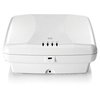
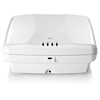
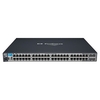

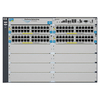









 Denmark
Denmark